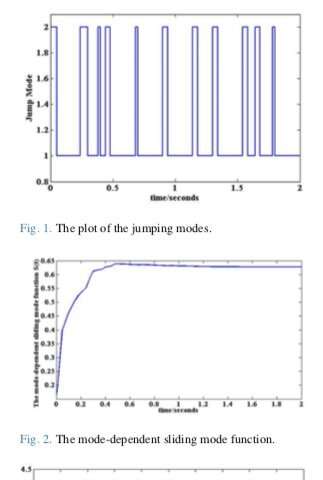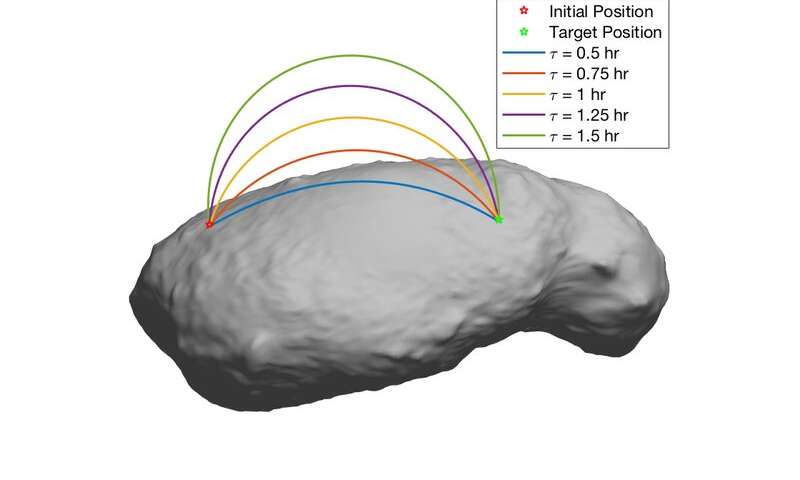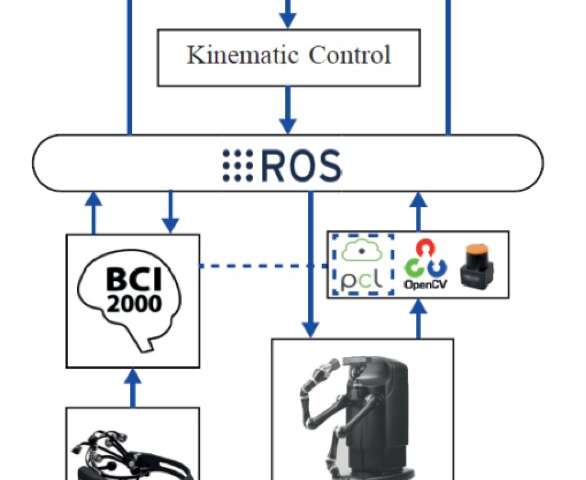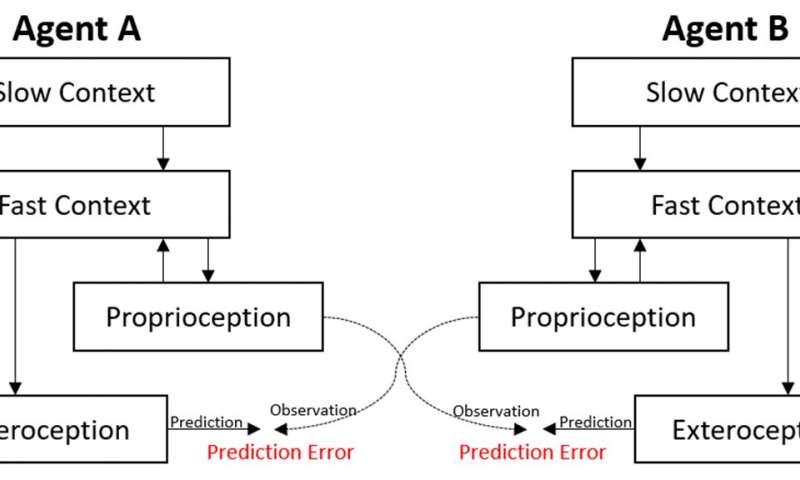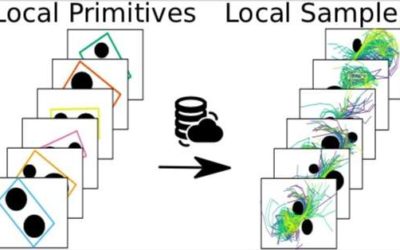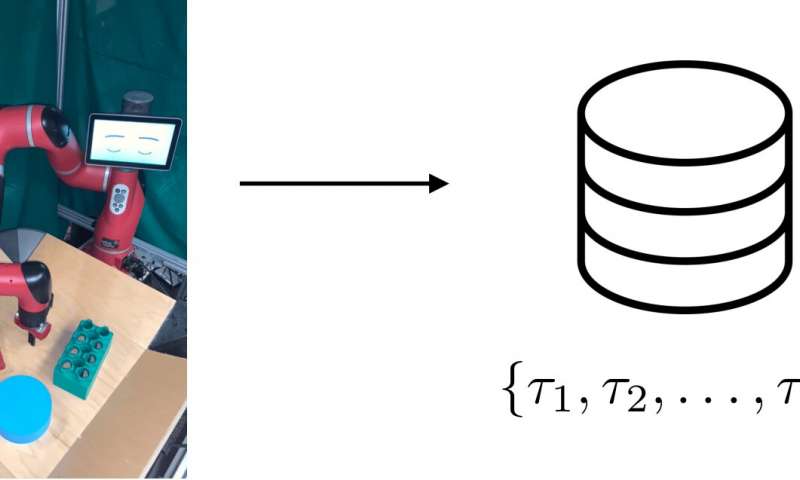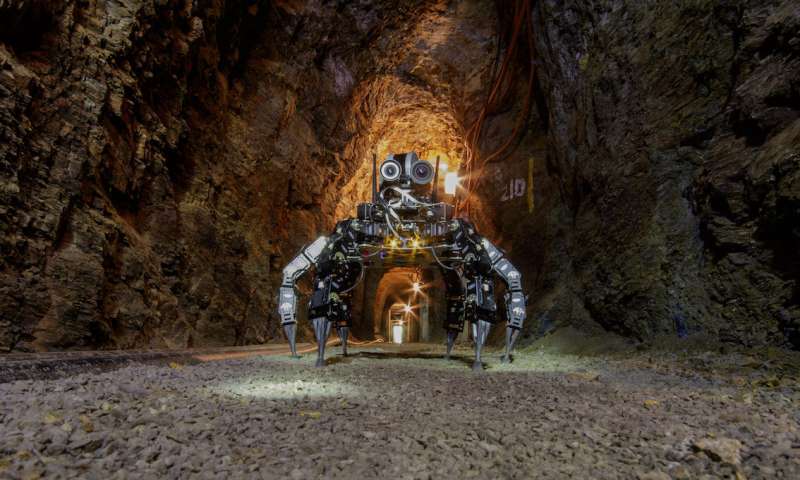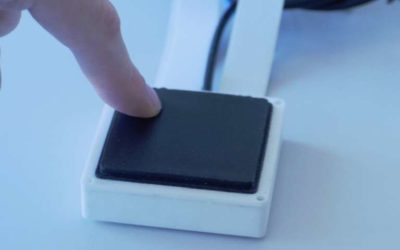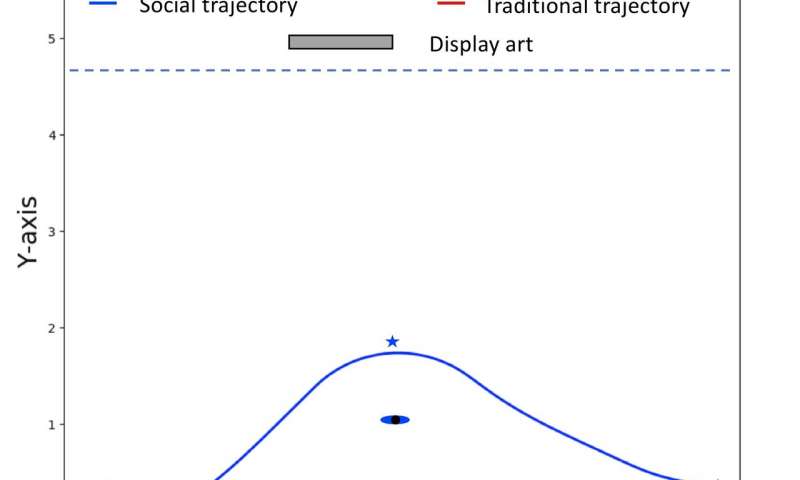Researchers at Anhui University in China have recently developed a new method to enable sliding mode control in a class of nonlinear positive Markov jumping systems (MJSs) with uncertain parameters. Their approach is outlined in a paper published in Springer's...
Robotics
An approach for motion planning on asteroid surfaces with irregular gravity fields
Asteroids are small, rocky bodies orbiting the sun that are too small to be called planets. There are millions of asteroids in the solar system, ranging in size, shape and composition. The exploration of asteroids could help to uncover fascinating information about...
This assistive robot is controlled via brain-computer interface
Researchers at the University of Cassino and Southern Lazio, in Italy, have recently developed a cutting-edge architecture that enables the operation of an assistive robot via a P300-based brain computer interface (BCI). This architecture, presented in a paper...
A neurorobotics approach for building robots with communication skills
Researchers at the Okinawa Institute of Science and Technology have recently proposed a neurorobotics approach that could aid the development of robots with advanced communication capabilities. Their approach, presented in a paper pre-published on arXiv, is based on...
A new robot for artistic grayscale painting
A team of researchers at St. Petersburg Electrotechnical University (ETU-LETI) and Ural Federal University (URFU) has recently created a new robotic setup for realistic grayscale painting. The project's lead developer, Dr. Artur Karimov, is a professional artist...
A global motion-planning approach based on local experiences
While humans can execute motions naturally and instantaneously, robots require advanced motion planning strategies in order to navigate their surroundings. Motion planning is thus a key area of robotics research, aimed at developing tools and techniques that allow...
A method for self-supervised robotic learning that entails setting feasible goals
Reinforcement learning (RL) has so far proved to be an effective technique for training artificial agents on individual tasks. However, when it comes to training multi-purpose robots, which should be able to complete a variety of tasks that require different skills,...
A model for posture adaptation of legged robots while navigating confined spaces
Multi-legged robots are capable of navigating a variety of complex and unstructured terrains. Their many degrees of freedom allow them to adapt their walking posture to navigate several challenging environments, including confined spaces.
A multi-camera optical tactile sensor that could enable vision-based robotic skins
A team of researchers at ETH Zurich in Switzerland has recently developed a multi-camera optical tactile sensor (i.e., a tactile sensor based on optical devices) that collects information about the contact force distribution applied to its surface. This sensor,...
A multi-objective optimization approach for socially aware robot navigation
Mobile robots are gradually making their way into a number of human-populated environments, including hospitals, malls and people's homes. In order for these robots to interact with humans in their surroundings, they should respect a number of unspoken social norms...

